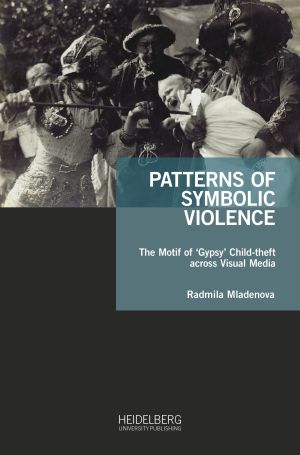
How to Cite
License

This work is licensed under a Creative Commons Attribution-ShareAlike 4.0 International License.
Identifiers
Published
Patterns of Symbolic Violence
The Motif of ‘Gypsy’ Child-theft across Visual Media
Drawing on a number of paradigmatic works of art, the book explores the motif of ‘gypsy’ child-theft and its visualisations. The analytical focus is on the colour coding of bodies in texts and images and their racialised/anti-gypsy uses. Offering a comprehensive survey of the motif’s adaptations to different visual media, the author elaborates on its multiple layers of meaning and functions. The analysis starts with a critical review of Cervantes’ tale “La gitanilla”, moving through seventeenth-century Dutch history painting to take a cursory look at nineteenth-century printed images, and end up with an annotated filmography of 49 cinematic works.



